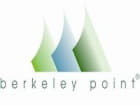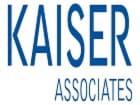United Therapeutics Corporation (Nasdaq: UTHR) today announced its financial results for the fourth quarter and year ended December 31, 2020. Full year net revenue rose to $1,483 million, as U.S. patients being treated with the company's treprostinil-based therapies reached an all-time high during the fourth quarter.
"We're entering 2021 better positioned than at any time in our history," said Martine Rothblatt, Ph.D., Chairman and Chief Executive Officer of United Therapeutics. "We are working toward four product launches this year, led by the recent launch of the Remunity® Pump and followed by the upcoming Tyvaso® label expansion into pulmonary hypertension associated with interstitial lung disease (PH-ILD), the Implantable System for Remodulin® (ISR), and the innovative Tyvaso DPI™ device, assuming we receive the relevant FDA approvals. At the same time, our development teams continue to drive innovation in the pulmonary hypertension space as detailed in the recent New England Journal of Medicine publication of our INCREASE data in PH-ILD and our recent announcement of Tyvaso DPI clinical data, which suggest a comparable systemic treprostinil exposure to our approved Tyvaso Inhalation System."
"We are pleased that our treprostinil-based products achieved another record year of annual net revenues and total U.S. patients on therapy, trends we expect to continue, fueled by our four planned product launches this year," said Michael Benkowitz, President and Chief Operating Officer of United Therapeutics. "We are deep into commercial launch preparations for Tyvaso in PH-ILD and expect that this indication could expand the use of Tyvaso to more than double the current number of patients on therapy in the near term. Additionally, we're focused on the ISR and the Tyvaso DPI launches targeted for later this year."
FOURTH QUARTER AND FULL YEAR 2020 FINANCIAL RESULTS
Key financial highlights include (dollars in millions, except per share data):
|
Three Months Ended |
Year Ended |
||||||||||||||
|
2020 |
2019 |
2020 |
2019 |
||||||||||||
|
Revenues |
$ |
384.9 |
$ |
311.1 |
$ |
1,483.3 |
$ |
1,448.8 |
|||||||
|
Net income (loss) |
$ |
98.8 |
$ |
52.6 |
$ |
514.8 |
$ |
(104.5) |
|||||||
|
Non-GAAP earnings(1) |
$ |
149.3 |
$ |
86.3 |
$ |
644.7 |
$ |
569.2 |
|||||||
|
Net income (loss), per basic share |
$ |
2.22 |
$ |
1.20 |
$ |
11.65 |
$ |
(2.39) |
|||||||
|
Net income (loss), per diluted share |
$ |
2.19 |
$ |
1.20 |
$ |
11.54 |
$ |
(2.39) |
|||||||
|
Non-GAAP earnings, per diluted share(1) |
$ |
3.31 |
$ |
1.96 |
$ |
14.46 |
$ |
12.94 |
|||||||
|
________________________ |
|||||||||||||||
|
(1) |
See definition of non-GAAP earnings, a non-GAAP financial measure, and a reconciliation of net income (loss) to non-GAAP earnings below. |
Revenues
|
Three Months Ended |
Dollar |
Percentage |
Year Ended |
Dollar |
Percentage |
||||||||||||||||||||||||
|
2020 |
2019 |
2020 |
2019 |
||||||||||||||||||||||||||
|
Net product sales: |
|||||||||||||||||||||||||||||
|
Remodulin® |
$ |
127.9 |
$ |
107.4 |
$ |
20.5 |
19 |
% |
$ |
516.7 |
$ |
587.0 |
$ |
(70.3) |
(12) |
% |
|||||||||||||
|
Tyvaso® |
131.7 |
91.4 |
40.3 |
44 |
% |
483.3 |
415.6 |
67.7 |
16 |
% |
|||||||||||||||||||
|
Orenitram® |
74.0 |
50.9 |
23.1 |
45 |
% |
293.1 |
225.3 |
67.8 |
30 |
% |
|||||||||||||||||||
|
Unituxin® |
29.7 |
33.6 |
(3.9) |
(12) |
% |
122.9 |
113.7 |
9.2 |
8 |
% |
|||||||||||||||||||
|
Adcirca® |
21.6 |
27.8 |
(6.2) |
(22) |
% |
67.3 |
107.2 |
(39.9) |
(37) |
% |
|||||||||||||||||||
|
Total revenues |
$ |
384.9 |
$ |
311.1 |
$ |
73.8 |
24 |
% |
$ |
1,483.3 |
$ |
1,448.8 |
$ |
34.5 |
2 |
% |
|||||||||||||
Net product sales of our treprostinil-based products (Remodulin, Tyvaso, and Orenitram) grew by $65.2 million for the year ended December 31, 2020, as compared to 2019. This increase was driven by growth in U.S. net product sales of our treprostinil-based products of $122.6 million in 2020, as compared to 2019, partially offset by a $57.4 million decline in net product sales of our treprostinil-based products outside the United States.
In addition, as previously disclosed, our 2019 quarterly results were impacted by a mistake by one of our U.S. distributors in its utilization data, which resulted in the distributor ordering more product than normal, primarily in the third quarter of 2019. Upon the distributor's correction of its utilization data in the fourth quarter of 2019, the distributor reduced its purchases of our products in the fourth quarter of 2019 in order to normalize its inventory levels (collectively, the Corrected Order). We estimate that the Corrected Order reduced net product sales for Remodulin, Tyvaso, and Orenitram by approximately $18.3 million, $12.7 million, and $6.1 million, respectively, or $37.1 million in total, during the fourth quarter of 2019. Absent the Corrected Order, there would have been no change in U.S. net product sales for Remodulin and our net product sales for Tyvaso and Orenitram would have grown by 27 percent and 30 percent, respectively, in the fourth quarter of 2020, as compared to the fourth quarter of 2019. We are providing these non-GAAP financial measures to show the period-to-period revenue change for these products in the absence of the Corrected Order to improve investors' understanding of our financial results. In addition, while this inventory fluctuation had a significant impact on our U.S. revenues during the third and fourth quarters of 2019, the effect on full-year U.S. revenues was negligible.
The year-over-year increase in quarterly revenues for Remodulin, Tyvaso, and Orenitram were all impacted by the Corrected Order, as discussed above. In addition, the increases in year-over-year quarterly revenues for Tyvaso and Orenitram resulted from: (1) an increase in quantities sold, reflecting a growing number of patients; and (2) to a lesser extent, price increases for Tyvaso.
The reduction in annual Remodulin revenues for 2020 compared to 2019 was primarily driven by: (1) a reduction in quantities sold in Europe, which we believe resulted from generic competition and the impact of COVID-19; and (2) to a lesser extent, a reduction in U.S. Remodulin revenues, which we believe resulted from the impact of COVID-19. The growth in annual Tyvaso revenues for 2020 compared to 2019 was due to an increase in quantities sold, reflecting a growing number of patients, and price increases. The growth in annual Orenitram revenues for 2020 compared to 2019 was due to an increase in quantities sold, as the number of patients being treated with Orenitram grew following the update to Orenitram's labeling to reflect the FREEDOM-EV clinical trial results. The decrease in annual Adcirca revenues for 2020 compared to 2019 was driven by continued erosion of market share due to generic competition.
Expenses
Cost of product sales. The table below summarizes cost of product sales by major category (dollars in millions):
|
Three Months Ended |
Dollar |
Percentage |
Year Ended |
Dollar |
Percentage |
||||||||||||||||||||||||
|
2020 |
2019 |
2020 |
2019 |
||||||||||||||||||||||||||
|
Category: |
|||||||||||||||||||||||||||||
|
Cost of product sales |
$ |
30.4 |
$ |
28.2 |
$ |
2.2 |
8 |
% |
$ |
101.0 |
$ |
117.4 |
$ |
(16.4) |
(14) |
% |
|||||||||||||
|
Share-based |
4.4 |
0.6 |
3.8 |
633 |
% |
7.1 |
0.2 |
6.9 |
NM(2) |
||||||||||||||||||||
|
Total cost of product |
$ |
34.8 |
$ |
28.8 |
$ |
6.0 |
21 |
% |
$ |
108.1 |
$ |
117.6 |
$ |
(9.5) |
(8) |
% |
|||||||||||||
|
________________________ |
|||||||||||||||||||||||||||||
|
(1) |
Refer to Share-based compensation below for discussion. |
|
(2) |
Calculation is not meaningful. |
Cost of product sales, excluding share-based compensation. The decrease in cost of product sales for the year ended December 31, 2020, as compared to the same period in 2019, was primarily attributable to decreases in royalty expense for Adcirca, as fewer bottles were sold following the onset of generic competition for Adcirca beginning in August 2018.
Research and development expense. The table below summarizes research and development expense by major category (dollars in millions):
|
Three Months Ended |
Dollar |
Percentage |
Year Ended |
Dollar |
Percentage |
||||||||||||||||||||||||
|
2020 |
2019 |
2020 |
2019 |
||||||||||||||||||||||||||
|
Category: |
|||||||||||||||||||||||||||||
|
Research and |
$ |
109.5 |
$ |
109.6 |
$ |
(0.1) |
— |
% |
$ |
328.2 |
$ |
1,182.2 |
$ |
(854.0) |
(72) |
% |
|||||||||||||
|
Share-based |
16.6 |
4.0 |
12.6 |
315 |
% |
29.5 |
0.4 |
29.1 |
NM(2) |
||||||||||||||||||||
|
Total research and |
$ |
126.1 |
$ |
113.6 |
$ |
12.5 |
11 |
% |
$ |
357.7 |
$ |
1,182.6 |
$ |
(824.9) |
(70) |
% |
|||||||||||||
|
________________________ |
|||||||||||||||||||||||||||||
|
(1) |
Refer to Share-based compensation below for discussion. |
|
(2) |
Calculation is not meaningful. |
Research and development expense, excluding share-based compensation. The decrease in research and development expense for the year ended December 31, 2020, as compared to the same period in 2019, was due to a one-time, $800.0 million up-front payment to Arena Pharmaceuticals, Inc. (Arena) under our license agreement related to ralinepag during the year ended December 31, 2019. The remainder of the decrease resulted primarily from: (1) the completion of the phase 3 BEAT study of esuberaprost in April 2019, the completion of the phase 3 DISTINCT study of Unituxin in February 2020, and the discontinuation of the phase 3 SOUTHPAW study of Orenitram in October 2019; (2) a decrease in spending due to terminated drug delivery device projects; and (3) an impairment charge related to the termination of a license agreement during the year ended December 31, 2019.
Selling, general, and administrative expense. The table below summarizes selling, general, and administrative expense by major category (dollars in millions):
|
Three Months Ended |
Dollar |
Percentage |
Year Ended |
Dollar |
Percentage |
||||||||||||||||||||||||
|
2020 |
2019 |
2020 |
2019 |
||||||||||||||||||||||||||
|
Category: |
|||||||||||||||||||||||||||||
|
General and |
$ |
69.2 |
$ |
61.7 |
$ |
7.5 |
12 |
% |
$ |
241.8 |
$ |
230.7 |
$ |
11.1 |
5 |
% |
|||||||||||||
|
Sales and marketing |
16.8 |
18.6 |
(1.8) |
(10) |
% |
54.9 |
60.7 |
(5.8) |
(10) |
% |
|||||||||||||||||||
|
Share-based |
72.7 |
24.9 |
47.8 |
192 |
% |
127.2 |
44.8 |
82.4 |
184 |
% |
|||||||||||||||||||
|
Total selling, general, and |
$ |
158.7 |
| ||||||||||||||||||||||||||















